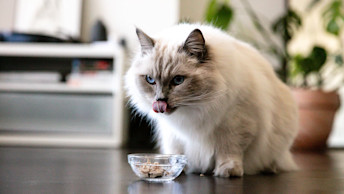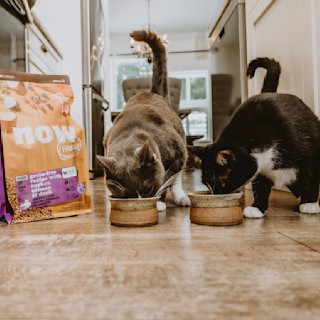February 5, 2024
Can Cats Eat Potatoes?

Potatoes are a common staple in the human diet, but can cats eat potatoes too? The answer is yes! Cats can eat cooked potatoes as part of a balanced diet. Potatoes contain many vital nutrients that can be beneficial as an ingredient in cat food or even given as the occasional treat.
Health Benefits of Potatoes for Cats
Potatoes as a part of a balanced diet can provide a number of nutritional benefits for cats. These benefits include:
Good Source of Vitamins and Minerals
Potatoes contain several vitamins and minerals that are essential for cats. These include vitamin B6, potassium, magnesium, and iron. Potatoes also contain vitamin C which acts as an antioxidant to help support immune system health. The minerals found in potatoes play a variety of roles including supporting healthy muscle function, oxygen transport, and more.
Provides Complex Carbohydrates
The carbohydrates found in potatoes are complex carbs that break down slowly during digestion. This provides cats with a steady source of energy. The fiber found in potato skins can also help promote digestive health.

Can Support Digestive Health
In addition to their total fiber content, potatoes contain a unique type of fiber called “prebiotic fiber” that supports a healthy gut microbiome in cats. Additionally, potatoes contain a special type of fiber-like starch called "resistant starch" which acts as a prebiotic to feed good bacteria. This can support digestion and absorption of nutrients.
Helps Support a Healthy Weight
The high-fiber content of white potatoes and sweet potatoes in pet food helps keep your cat feeling full, helping to support a healthy weight. Potatoes are also lower in calories than many similar starchy vegetables like corn, peas, and parsnips.
Potatoes as an Ingredient in Cat Food
Apart from being a nutrient powerhouse, potatoes play a crucial role in providing texture and structure to kibble and wet pet foods.
When formulating grain-free kibble, potatoes are utilized as a carbohydrate source, giving the kibble its distinctive shape and texture. Without carbohydrates, our beloved pets wouldn't experience that satisfying crunch they know and love.

Our Recommendation
Grain-Free Dry Cat Food
Treat your cat to Now Fresh grain-free dry cat food recipes. Crafted with high-quality fresh meat, fruits, and vegetables.
View dry cat foodCarbohydrates also play a vital role in creating the texture and form of wet foods, a factor especially important for cats, who are highly sensitive to texture and mouthfeel. Moreover, carbohydrates grant us the flexibility to create a wide array of recipes with varying nutrient levels.
Can Cats Eat Sweet Potatoes, Too?
Both white potatoes and sweet potatoes serve as excellent sources of manganese, phosphorus, copper, potassium, and vitamin B6. White potatoes boast a high vitamin C content, while sweet potatoes are particularly rich in beta-carotene, the same antioxidant found in carrots. Both types of potatoes are abundant sources of complex carbohydrates that provide readily available energy.
The most noticeable difference between white and sweet potatoes lies in their appearance. The antioxidant beta-carotene is responsible the characteristic orange color found in both sweet potatoes and carrots.
How to Feed Potatoes as a Treat
If you're looking to feed your cat potato as an occasional treat, there are some tips to follow:
Tips for Feeding Potatoes as a Treat
- It's best to cook the potatoes first before feeding to cats.
- Cut the potatoes into small, bite-sized pieces. Cats may have trouble chewing or choking on large chunks of potato. Small pieces are safer and easier to eat.
- Avoid adding any seasonings, salt, butter, or oils to the potato. Plain cooked potato is healthiest for cats. Seasonings and fats can upset a cat's stomach.
- Let the potato cool completely to room temperature before feeding to your cat. Cats should not be fed straight from the stove or microwave due to burn risks.
- Introduce potatoes in very small amounts at first to make sure your cat tolerates them. Start with just a bite or two.
- Remember that when feeding anything as a treat, be sure not to exceed 10% of daily caloric intake.
- Be sure to monitor your cat's reaction and adjust as needed.
Conclusion
In conclusion, potatoes can be a beneficial portion of a cat’s daily complete and balanced diet or added in as the occasional treat. Both white and sweet potatoes are a rich source of vitamins, minerals, and complex carbohydrates, providing a variety of health benefits for cats.


